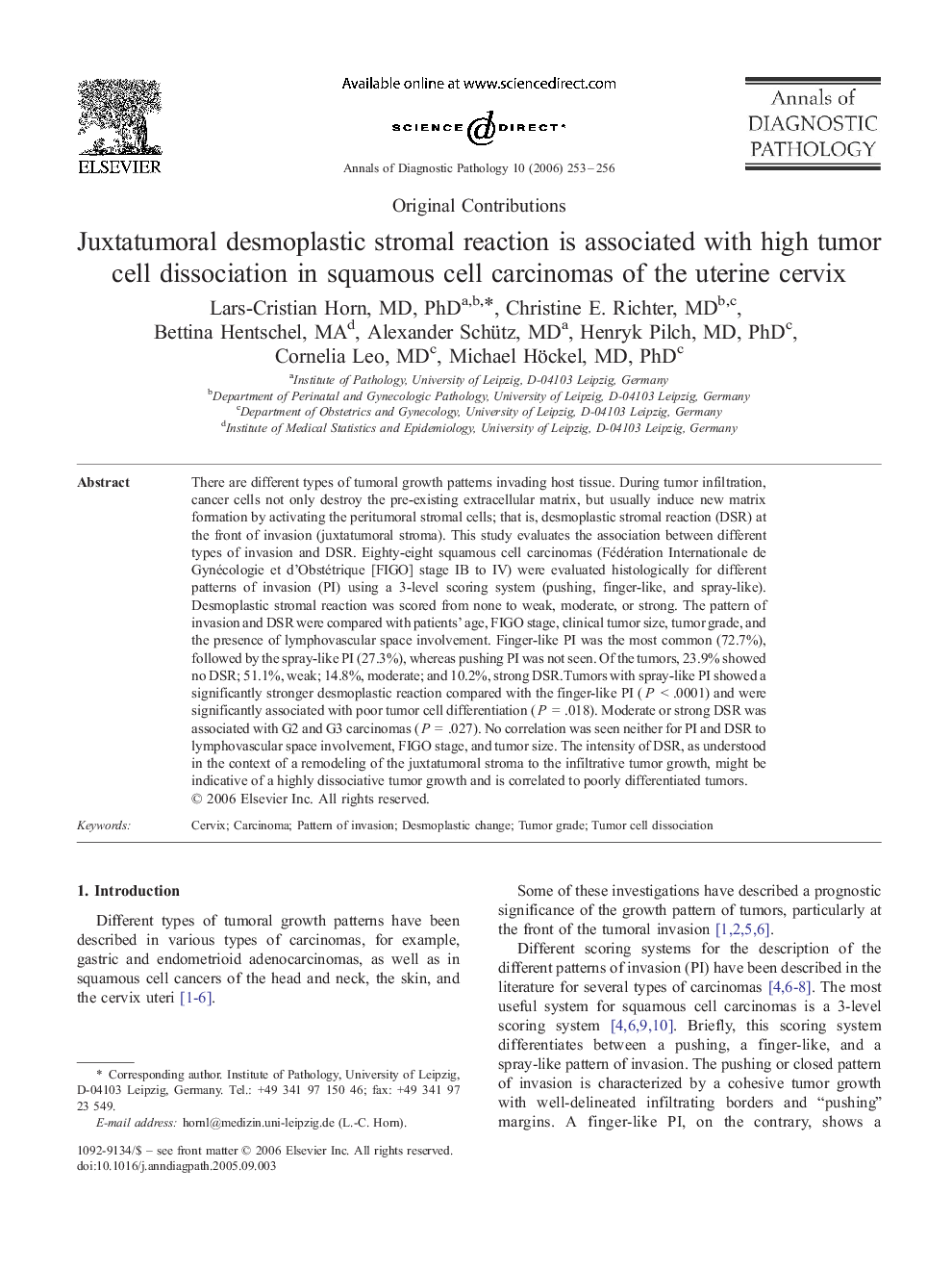| Article ID | Journal | Published Year | Pages | File Type |
|---|---|---|---|---|
| 4130717 | Annals of Diagnostic Pathology | 2006 | 4 Pages |
There are different types of tumoral growth patterns invading host tissue. During tumor infiltration, cancer cells not only destroy the pre-existing extracellular matrix, but usually induce new matrix formation by activating the peritumoral stromal cells; that is, desmoplastic stromal reaction (DSR) at the front of invasion (juxtatumoral stroma). This study evaluates the association between different types of invasion and DSR. Eighty-eight squamous cell carcinomas (Fédération Internationale de Gynécologie et d'Obstétrique [FIGO] stage IB to IV) were evaluated histologically for different patterns of invasion (PI) using a 3-level scoring system (pushing, finger-like, and spray-like). Desmoplastic stromal reaction was scored from none to weak, moderate, or strong. The pattern of invasion and DSR were compared with patients' age, FIGO stage, clinical tumor size, tumor grade, and the presence of lymphovascular space involvement. Finger-like PI was the most common (72.7%), followed by the spray-like PI (27.3%), whereas pushing PI was not seen. Of the tumors, 23.9% showed no DSR; 51.1%, weak; 14.8%, moderate; and 10.2%, strong DSR. Tumors with spray-like PI showed a significantly stronger desmoplastic reaction compared with the finger-like PI (P < .0001) and were significantly associated with poor tumor cell differentiation (P = .018). Moderate or strong DSR was associated with G2 and G3 carcinomas (P = .027). No correlation was seen neither for PI and DSR to lymphovascular space involvement, FIGO stage, and tumor size. The intensity of DSR, as understood in the context of a remodeling of the juxtatumoral stroma to the infiltrative tumor growth, might be indicative of a highly dissociative tumor growth and is correlated to poorly differentiated tumors.
